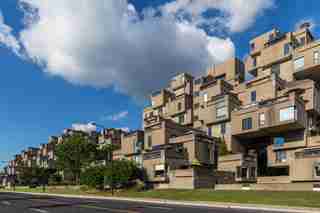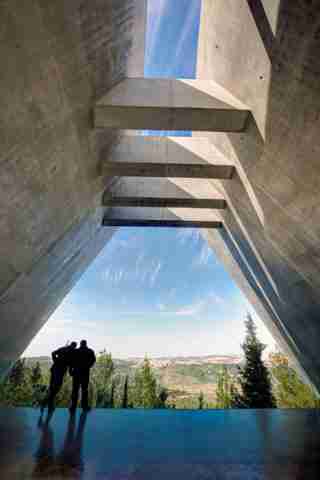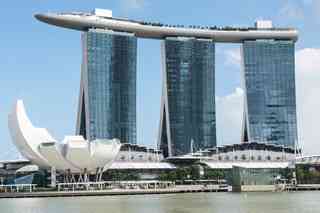Moshe Safdie emerged on the international architectural scene with a bang in 1967 with his Habitat 67 housing complex, built for the Montreal World’s Fair. Since then the architect, who was born in Israel and raised in Canada, has designed striking cultural, civic, and educational buildings around the world. Safdie, who apprenticed with Louis Kahn, is known for his firm’s large-scale urban projects and his use of bold shapes and integrated green spaces. Nearly 50 years after Habitat 67 debuted, Safdie continues to innovate with high-profile projects such as Marina Bay Sands, in Singapore’s waterfront district, which includes three 55-story towers connected by the three-acre mixed-use Sands SkyPark. In 2015 Safdie received the American Institute of Architects’ Gold Medal , one of the field’s highest honors, and will be given a lifetime achievement award at the 2016 National Design Awards. The firm recently completed Sky Habitat Singapore , a residential complex that nods to Safdie’s most famous structure, and has projects in the works in Chongqing, China; Cartagena, Colombia; and Charleston, South Carolina .

Built for the World Exposition in Montreal, Habitat 67 put Safdie on the map. The prefabricated housing complex consists of 354 modules that were assembled into 158 residences, each with its own roof garden.

In 2005 Safdie completed an expansion of Yad Vashem, the World Holocaust Remembrance Center in Israel. The project included a new Holocaust History Museum, a visitor center, a synagogue, art galleries, learning and visual centers, and an exhibitions pavilion. Safdie’s triangular design for the museum cuts through the hillside and opens to a powerful view of Jerusalem.

The monumental Marina Bay Sands resort was completed in 2011 on the Singapore waterfront. The centerpiece of the complex is the hotel, which is made up of three 55-story towers connected by the Sands SkyPark. The cantilevered space includes a swimming pool, gardens, a public observation deck, restaurants, and jogging paths. The complex also has a casino, convention center, theaters, and the Museum of ArtScience.
The Crystal Bridges Museum of American Art, founded by Walmart heiress Alice Walton and located in Bentonville, Arkansas, opened in 2011. Safdie’s design echoes the surrounding landscape and includes a series of pavilions and two buildings that also serve as bridges and dams for the site’s creek.
Kansas City, Missouri’s Kauffman Center for the Performing Arts , completed by Safdie in 2011, is clad in a waves of stainless steel, which form the main performance venues. A glass atrium connects the two spaces and offers views of the city skyline.
The Salt Lake City Public Library, which Safdie completed in 2003, comprises a five-story triangular building, a rectangular administrative space, and a crescent-shaped screen wall. The building was designed to adapt to new technology and features a 300-seat auditorium, a rooftop garden, and a spacious public plaza.
Located in the town of Anandpur Sahib, in the Punjab region of India, Safdie’s 2011 Khalsa Heritage Center is a museum celebrating the history of Sikh people. The complex is divided by a ravine into two sections connected by a pedestrian bridge and was constructed using local stone and stainless steel.
Safdie devised the Federal Courthouse in Springfield, Massachusetts, to curve around three 200-to-500-year-old “heritage trees.” The 2008 building’s design puts a modern spin on traditional architectural elements, such as the entry’s colonnade, and conceals the necessary security features.
Safdie’s 1988 National Art Gallery of Canada is set on the Ottawa waterfront and offers nearly 133,000 square feet of gallery space. The cathedral-like building is constructed of pink and gray granite from Quebec and features a three-tiered glass cupola.
The nondenominational sanctuary, known as the Class of 1959 Chapel for its benefactors, is located on the campus of Harvard Business School and was completed in 1992. Within the oxidized-copper-clad structure is a skylit 100-seat sanctuary.
Safdie worked on the Skirball Cultural Center in Los Angeles for 30 years before the completion of its fourth and final phase in 2013. The 15-acre complex is located at the base of the Santa Monica Mountains, and its buildings, arcades, and courtyards are woven into the landscape.
